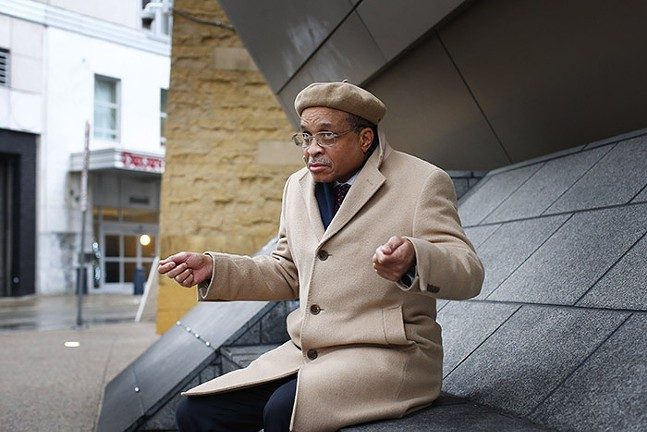Shrinking and Chaotic Newsroom in Pittsburgh
J-Students, PBS Spotlight Juveniles Serving Life
Sick 16-Year-Old Died in Border Patrol Care
Reforms Aside, People of Color Fill Death Row
Idea: Let Unpaid Interns Live With Staffers
11 Projects Receive Grants for Local News
Border, Sex Abuse, Race Stories Win DuPonts
Stephen A., Jemele Hill Clash Over Kaepernick
Alumni of Howard U.’s Hilltop Appeal for Help
Number of Jailed Journalists Near Record Highs
Short Takes
Model Rodney Regan demonstrates a city without a daily newspaper. (Credit: Jared Wickerham/Pittsburgh City Paper)
Shrinking and Chaotic Newsroom in Pittsburgh
On Nov. 10, the website of the Pittsburgh Post-Gazette carried an unusual column, headlined, “Commentary: The Lost Cause of Nikki Haley. The former U.N. ambassador and South Carolina governor conveniently ‘forgets’ what the Confederate flag stands for.”
It wasn’t the opinion that was unusual. It was that there was no name attached. Instead, like all the other columns on the site, it carried this note, “The commentary below contains opinion. The author’s name has been withheld at the writer’s request.”
Staff columnist Tony Norman (pictured below), who wrote the Haley piece, explained to Journal-isms by email Friday, “We’re all participating in a byline strike. We haven’t had a raise in 14 years and we haven’t had a contract in 3 years. We’re fed up, so we commenced this byline strike nearly 3 weeks ago to draw attention to the working conditions at the paper. . . . When the strike is over, we’ll put our names on our columns and news stories retroactively. . . . “
That day will come on Tuesday, the Newspaper Guild of Pittsburgh announced on Monday.
“Through Sunday, 1,406 bylines were withheld from stories, columns, photographs and graphic illustrations, a daily average of 54 bylines,” the Guild announcement said. “The final figure will include bylines withheld from Monday and Tuesday’s editions, likely another 100 or so. Bylines will return to new work by the journalists published on Wednesday. The number of bylines withheld were from the Post-Gazette‘s print and digital newspapers. Even more bylines were withheld from breaking news stories and photos on the PG’s website and mobile app, but those numbers were not included in the total.
” ‘A month was the right time to end it because our message of mistreatment at the Post-Gazette is now known locally and throughout the country,’ said Michael A. Fuoco, a 35-year employee and Guild president. ‘We never thought that our byline strike would cause owners Block Communication Inc. to end their despicable tactics of denying talented journalists a raise for 14 years, slashing our health care during three years of bad-faith bargaining and creating a toxic environment of fear, intimidation and retribution in the newsroom.
“ ‘What the byline strike showed in vivid detail is that we 140 journalists in the Guild are the heart and soul of this 233-year-old newspaper and without us there is no Post-Gazette. The sheer volume of stories, graphics, photographs and columns without bylines has exposed that to the public and the owners noticed as well.’ “
For background, Norman referred Journal-isms to a piece Wednesday by Ryan Deto in the Pittsburgh City Paper, “Recent moves by Pittsburgh Post-Gazette management have led to a shrinking and increasingly chaotic newsroom. Can the P-G survive?“
Deto wrote that the Guild, “the labor union that represents P-G staffers, has been in a labor battle over a lack of raise since 2006, years without a renewed contract, and being subjected to several negotiation meetings with a ‘union avoidance’ law firm that have gone nowhere in three years. . . .
“Since the start of this year, 20 guild members have left the P-G, while nine managers have either taken buyouts, been fired, or been forced out by management. Another newsroom manager will leave by the end of the year. Some positions have been replaced, but not many. There was a well-documented newsroom tirade by publisher John Block, major editorial conflicts between reporters and management, the surprise early departure of a longtime editor, the print edition of the paper cut to three days a week, and several reporters being assigned new beats, which guild members see as retaliation against their labor actions. . . .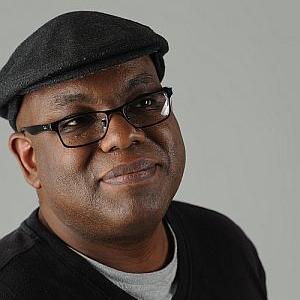
“Michael Fuoco, P-G staff reporter and president of the guild, says management is practicing an intentional strategy to make the newsroom so unbearable that guild members quit. ‘He is driving people out, he’s driving younger people out,’ Fuoco says of Burris. ‘We believe it is a coordinated effort.’ . . .”
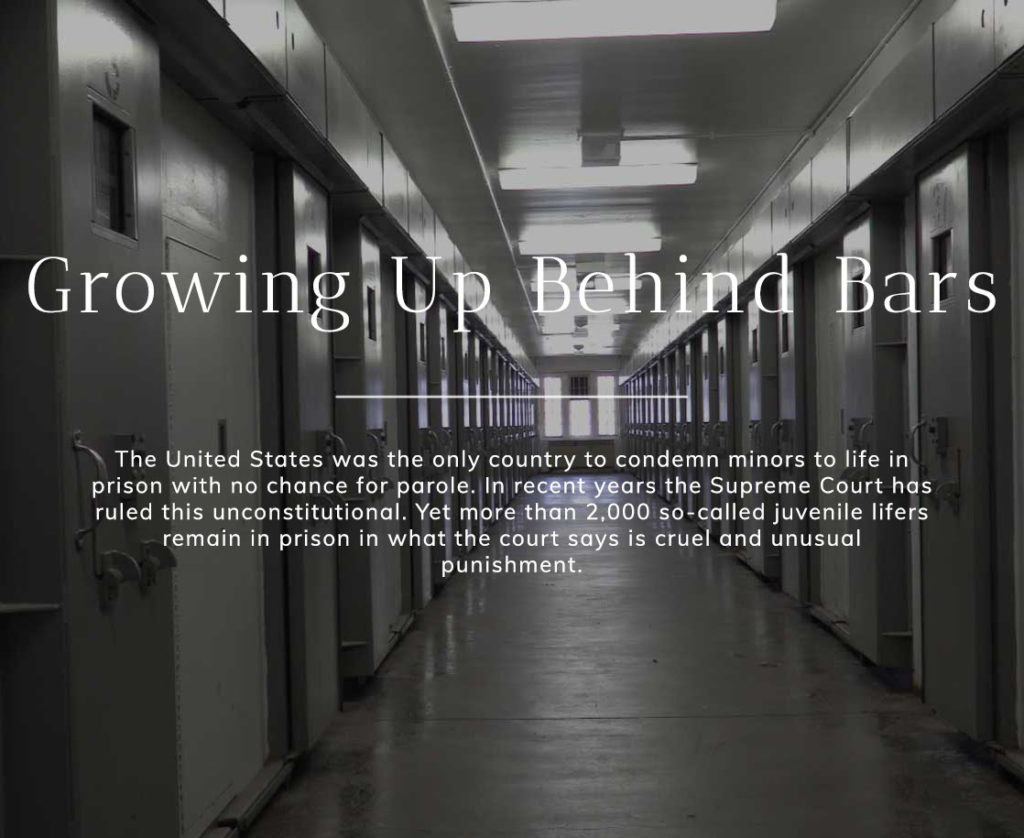
J-Students, PBS Spotlight Juveniles Serving Life
“The United States was the only country to condemn minors to life in prison with no chance for parole,” explains a headline above a collaboration among the University of Maryland’s Howard Center for Investigative Journalism, the “student-powered” Capital News Service and the “PBS NewsHour.”
“In recent years the Supreme Court has ruled this unconstitutional. Yet more than 2,000 so-called juvenile lifers remain in prison in what the court says is cruel and unusual punishment.
“Maryland is one of only three states that gives its governor a say in granting parole. In the 1990s, fear over the rise in violent crime led then-Gov. Parris Glendening to declare he would sign no paroles for individuals with life sentences, including those who committed crimes before turning 18.
“The Supreme Court later ruled that juveniles must be given a chance for release. Yet some 300 Maryland inmates sentenced to life as juveniles went 23 years with no parole until November, when Gov. Larry Hogan granted parole to three men.
“The story of Maryland’s juvenile lifers and their years without parole was told on the PBS NewsHour by correspondent John Yang. The story was researched, shot, and edited by students of the University of Maryland’s Philip Merrill College of Journalism . . . .”
A tagline explains, “Capital News Service is a student-powered organization run by the University of Maryland Philip Merrill College of Journalism. For nearly 30 years, we have provided deeply reported, award-winning coverage of issues that are important to Marylanders. The Howard Center is committed to publishing impactful investigative journalism and developing watchdog reporters.”
Sick 16-Year-Old Died in Border Patrol Care
“Carlos Gregorio Hernandez Vasquez (pictured below), a 16-year-old Guatemalan migrant, was seriously ill when immigration agents put him in a small South Texas holding cell with another sick boy on the afternoon of May 19,” Robert Moore, Susan Schmidt and Maryam Jameel reported Dec. 5 for ProPublica.
 “A few hours earlier, a nurse practitioner at the Border Patrol’s dangerously overcrowded processing center in McAllen had diagnosed him with the flu and measured his fever at 103 degrees. She said that he should be checked again in two hours and taken to the emergency room if his condition worsened.
“A few hours earlier, a nurse practitioner at the Border Patrol’s dangerously overcrowded processing center in McAllen had diagnosed him with the flu and measured his fever at 103 degrees. She said that he should be checked again in two hours and taken to the emergency room if his condition worsened.
“None of that happened. Worried that Carlos might infect other migrants in the teeming McAllen facility, officials moved him to a cell for quarantine at a Border Patrol station in nearby Weslaco.
“By the next morning, he was dead.
“In a press release that day, Customs and Border Protection’s acting commissioner at the time, John Sanders, called Carlos’ death a ‘tragic loss.’ The agency said that an agent had found Carlos ‘unresponsive’ after checking in on him. Sanders said the Border Patrol was ‘committed to the health, safety and humane treatment of those in our custody.’
“But the record shows that the Border Patrol fell far short of that standard with Carlos. ProPublica has obtained video that documents the 16-year-old’s last hours, and it shows that Border Patrol agents and health care workers at the Weslaco holding facility missed increasingly obvious signs that his condition was perilous. . . .”
- Esther J. Cepeda, Washington Post Writers Group: Nativity scene with cages is an essential reminder: Don’t look away from the border
- Suzanne Gamboa, NBC News: Video contradicts border agency’s account of death of ill migrant teen in its custody
- ProPublica: Carlos’ Family Objects to Publication of Video Detailing His Death (Dec. 6)
- Eugene Robinson, Washington Post: Blame Trump’s neglect for the death of Carlos Gregorio Hernandez Vasquez
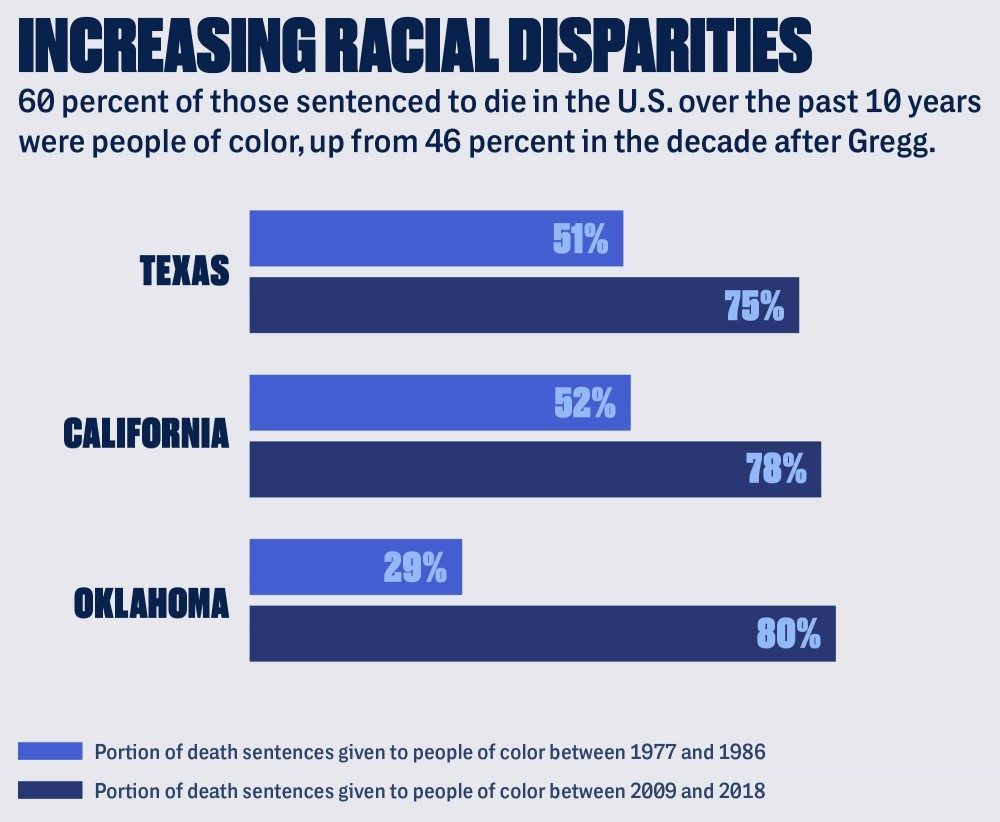
Reforms Aside, People of Color Fill Death Row
“In its historic 1972 ruling in Furman v. Georgia, the U.S. Supreme Court had struck down the death penalty as arbitrary and capricious, a lottery reserved for the poor and marginalized. States swiftly revised their statutes to pass constitutional muster,” Liliana Segura reported Dec. 3 for the Intercept.
“On July 2, 1976, the court upheld Texas’s new death penalty statute in Jurek v. Texas, writing approvingly that the legislation would ensure ‘the evenhanded, rational, and consistent imposition of death sentences under law.’ . . .
“Jurek was one of four rulings released alongside Gregg v. Georgia, the landmark decision that ushered in what is known as the ‘modern’ death penalty era. Collectively, the rulings upheld a new set of laws designed to rehabilitate a system the Supreme Court had declared broken just years before. Gregg and its companion cases announced to Americans that capital punishment could be carried out equitably after all. Executions restarted the following year. . . .
“As the 40-year anniversary of Gregg approached in 2016, we were confronted with a number of cases that seemed to embody the death penalty’s racist roots,” Segura continued, listing examples.
“It was cases like these, which exposed old truths about the so-called modern death penalty, that inspired The Intercept to begin compiling a death-row dataset in the summer of 2016. . . .
“Our dataset shows that in the first full decade after Gregg, 46 percent of those sentenced to die in current death penalty states were people of color. In the decade from January 2009 through December 2018, that percentage grew to 60 percent. A similar trend can be seen across several leading death penalty states. . . .”
Idea: Let Unpaid Interns Live With Staffers
“For aspiring young journalists trying to break into the media industry, barriers to entry can be impossibly high,” Jessica Murray reported Wednesday for Britain’s Guardian. “Unpaid internships combined with skyrocketing rents means often only the wealthy can get a foot in the door and there is a huge lack of diversity – journalism in Britain is 94% white, 86% university-educated and 55% male.
“A social enterprise is trying to tackle the problem by matching established journalists who have a spare room with interns who otherwise would not be able to afford accommodation.
“PressPad has so far supported 50 young journalists, giving them a place to stay during unpaid internships or work experience as well as valuable support and mentorship. It now hopes to crowdfund £30,000 [about $40,000] to hire a coordinator to help expand its operation. . . .”
11 Projects Receive Grants for Local News
“Today the American Journalism Project, a new, nonpartisan venture philanthropy organization dedicated to local news, announced its first grants to 11 nonprofit, local civic news organizations (CNOs), as well as new funding from Democracy Fund and participation in a collaborative fund focused on racial equity in journalism,” the project announced on Tuesday.
“These grants will give CNOs the resources to grow their business, technology, and fundraising capacity. Additionally, the American Journalism Project team will provide close support over 24 to 36 months to drive their focus on revenue and sustainability.
“Grantees included in today’s announcement are: Berkeleyside (East Bay, CA); Centro de Periodismo Investigativo (San Juan, PR); City Bureau (Chicago, IL); The Connecticut Mirror (Hartford, CT); inewsource (San Diego, CA); Mississippi Today (Ridgeland, MS); MLK50: Justice Through Journalism (Memphis, TN); NOISE (Omaha, NE); Underscore (Portland OR); WyoFile (Lander, WY); and VTDigger (Montpelier, VT).
“ ‘What distinguishes these CNOs is strong, entrepreneurial leadership and community buy-in. They are eager to take on the challenge of creative new business models for local news, but what’s been missing until now is the philanthropic capital to support them,’ said Elizabeth Green, CEO and editor-in-chief of Chalkbeat and co-founder and Board Chair of the American Journalism Project.
“AJP was founded in 2018 with a vision for a thriving ecosystem of local, civic journalism that strengthens democracy in the U.S. In what is a rapidly growing crisis in local communities across the country, commercial newspapers that until a generation ago met local information needs face a catastrophic market failure. AJP will help drive an order-of-magnitude increase in local journalism philanthropy and help communities learn to view local journalism as a public good, primarily civic rather than commercial in nature. . . .”
- Sara Fischer, axios.com: Google’s next local news investment is in Oakland
- Travis Quezon, Seattle Globalist: The Seattle Globalist reaching out to community to empower diverse voices through journalism education
- Laura Morgan Roberts and Anthony J. Mayo, Harvard Business Review: Toward a Racially Just Workplace
- National Association of Black Journalists: NFL and NABJ Partner on Summer Internship Program
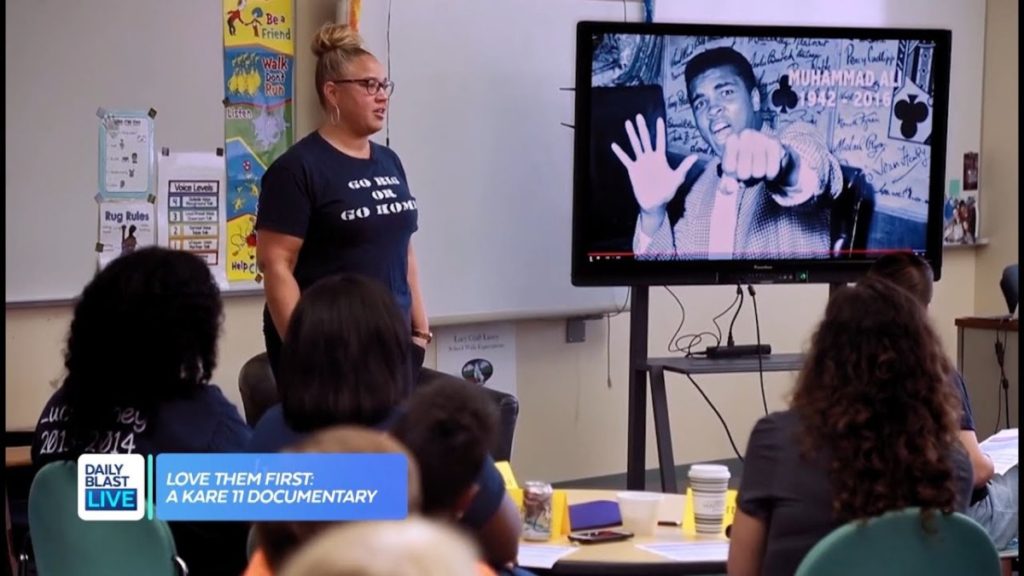
Border, Sex Abuse, Race Stories Win DuPonts
Race, immigration, political corruption and abuse of power, especially as it relates to sexual assault at home and abroad, were among the topics explored by the 16 winners of the 2020 Alfred I. duPont-Columbia University Awards, Columbia Journalism School announced Wednesday.
“One local Minneapolis television station is winning two duPont Awards: ‘On the Veteran Beat’ by KARE 11 Investigates, for its relentless commitment to reporting on veterans wronged by a broken system and KARE 11’s ‘Love Them First,’ a documentary that explored universal issues of race and poverty through an intimate portrait of one struggling elementary school,” Columbia’s announcement said.
“Two other duPont Award winners examined race in America: The ‘In the Dark’ podcast from APM Reports will be honored for a bonus season that followed the case of death row inmate Curtis Flowers as it went before the Supreme Court, which ultimately overturned his conviction. ‘Reconstruction: America After The Civil War,’ from WETA, McGee Media and Inkwell Films, wins for a vivid four-part documentary series on PBS that grappled with the 50-year arc spanning the end of the Civil War, Reconstruction, and the rise of Jim Crow.
“FRONTLINE on PBS also wins two Silver Batons for deep dives into growing threats today. The first Baton honors a chilling two-part documentary produced in partnership with ProPublica, ‘Documenting Hate,’ that covered the alarming rise of violent American hate groups. FRONTLINE’s second Baton will be awarded for ‘The Facebook Dilemma,’ another two-part project that traced how Facebook departed from its idealistic origins and became an international platform for political disinformation and division. . . .”

Stephen A., Jemele Hill Clash on Kaepernick
“The heat over his stance on Colin Kaepernick’s workout was dying down when ESPN First Take Host and Kaepernick critic Stephen A. Smith went on former NBA players Stephen Jackson and Matt Barnes’ podcast All The Smoke and revealed that he was one of the people working alongside Jay-Z to get Colin Kaepernick a workout — for the culture,” J.R. Gamble wrote Friday for the Shadow League.
“That set off another firestorm in Black media, which led to his friend and former ESPN colleague Jemele Hill releasing a series of Tweets subliminally blasting Smith’s association with the workout, without using his name.
“This is the one that sent Smith over the top. . . .
“Smith then fired his response to Jemele’s tweets and Twitter went stupid (as you will see in the comments). . . .”
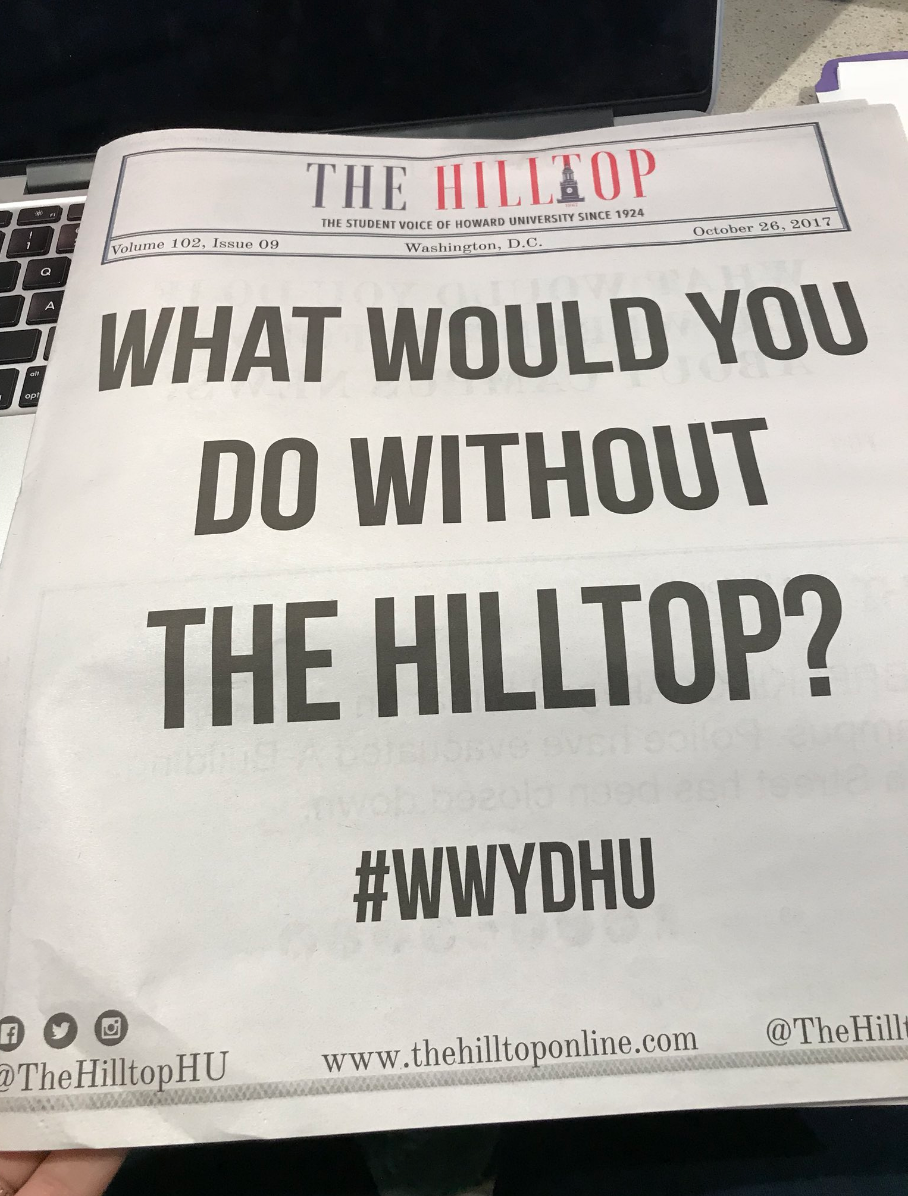 Alumni of Howard U.’s Hilltop Appeal for Help
Alumni of Howard U.’s Hilltop Appeal for Help
Alumni of the Howard University student newspaper, the Hilltop, are intervening to help the paper. Its situation is bleak, according to Steven Gray, Hilltop editor from 1998 to 1999, a veteran of the Washington Post, Time and the Wall Street Journal, now head of content at Techonomy, a New York-based conference/content company .
_________________________________
“The goal is to raise $10K by the end of the calendar year (or The Hilltop’s 96th anniversary, which is next month), Gray messaged Journal-isms on Friday. “The university will match that. The situation with The Hilltop is bleak — it isn’t publishing regularly, students aren’t getting paid to produce content, and they’re buying supplies out of their own pocket (which means students from less affluent backgrounds may not be able to get training).
“We’ve created The Hilltop Fund, a nonprofit alumni group, to hopefully provide more durable financial, strategic and operational support — including mentorship — and more details will be shared about that in the new year.”
Gray provided a link to the fundraising campaign, https://bisonfunder.everydayhero.com/us/the-hilltop.
It was reported last month that the Hilltop, co-founded in 1924 by celebrated literary figure Zora Neale Hurston, was struggling with a $280,000 debt.
It’s not the first time the newspaper has faced financial problems. Its front page asked in October 2017, “What Would You Do Without the Hilltop?”
- David Bauder, Associated Press: Prospective Journalists Soldier On (Nov. 4)
- Jaylin Paschal, Donovan Thomas and Yasha Washington, the Hilltop: The Hilltop Struggles With Changes In News Industry (Oct. 10)
Number of Jailed Journalists Near Record Highs
“The number of journalists imprisoned globally for their work in 2019 remained near record highs, as China tightened its iron grip on the press and Turkey, having stamped out virtually all independent reporting, released journalists awaiting trial or appeal,” Elana Beiser reported Wednesday for the Committee to Protect Journalists.
“Authoritarianism, instability, and protests in the Middle East led to a rise in the number of journalists locked up in the region — particularly in Saudi Arabia, which is now on par with Egypt as the third worst jailer worldwide. . . .”
- Mathew Ingram, Columbia Journalism Review: Freedom of expression is at a ten-year low, study says (Dec. 5)
- International Press Institute: Human Rights Day: Press freedom under threat around the world
- Muthoki Mumo and Jonathan Rozen, Committee to Protect Journalists: Nigeria and Ethiopia jail activist-journalists amid crackdown on free expression
Short Takes
Support Journal-ismsFacebook users: “Like” “Richard Prince’s Journal-isms” on Facebook.
Follow Richard Prince on Twitter @princeeditor
Richard Prince’s Journal-isms originates from Washington. It began in print before most of us knew what the internet was, and it would like to be referred to as a “column.” Any views expressed in the column are those of the person or organization quoted and not those of any other entity. Send tips, comments and concerns to Richard Prince at journal-isms-owner@yahoogroups.com
View previous columns (after Feb. 13, 2016).
- Diversity’s Greatest Hits, 2018 (Jan. 4, 2019)
- Book Notes: Is Taking a Knee Really All That? (Dec. 20, 2018)
- Book Notes: Challenging ’45’ and Proudly Telling the Story (Dec. 18, 2018)
- Book Notes: Get Down With the Legends! (Dec. 11, 2018)
- Journalist Richard Prince w/Joe Madison (Sirius XM, April 18, 2018) (podcast)
- Richard Prince (journalist) (Wikipedia entry)
- February 2018 Podcast: Richard “Dick” Prince on the need for newsroom diversity (Gabriel Greschler, Student Press Law Center, Feb. 26, 2018)
- Diversity’s Greatest Hits, 2017 — Where Will They Take Us in the Year Ahead?
- Book Notes: Best Sellers, Uncovered Treasures, Overlooked History (Dec. 19, 2017)
- An advocate for diversity in the media is still pressing for representation, (Courtland Milloy, Washington Post, Nov. 28, 2017)
- Morgan Global Journalism Review: Journal-isms Journeys On (Aug. 31, 2017)
- Diversity’s Greatest Hits, 2016
- Book Notes: 16 Writers Dish About ‘Chelle,’ the First Lady
- Book Notes: From Coretta to Barack, and in Search of the Godfather
- Journal-isms’ Richard Prince Wants Your Ideas (FishbowlDC, Feb. 26, 2016)
- “JOURNAL-ISMS” IS LATEST TO BEAR BRUNT OF INDUSTRY’S ECONOMIC WOES (Feb. 19, 2016)
- Richard Prince with Charlayne Hunter-Gault,“PBS NewsHour,” “What stagnant diversity means for America’s newsrooms” (Dec. 15, 2015)
- Book Notes: Journalists Follow Their Passions
- Book Notes: Journalists Who Rocked Their World
- Book Notes: Hands Up! Read This!
- Book Notes: New Cosby Bio Looks Like a Best-Seller
- Journo-diversity advocate turns attention to Ezra Klein project (Erik Wemple, Washington Post, March 5, 2014)
Columns below from the Maynard Institute are not currently available but are scheduled to be restored soon on journal-isms.com.
- Book Notes: “Love, Peace and Soul!” And More
- Book Notes: Book Notes: Soothing the Senses, Shocking the Conscience
- Diversity’s Greatest Hits, 2015
- Diversity’s Greatest Hits, 2014
- Diversity’s Greatest Hits, 2013
- Diversity’s Greatest Hits, 2012
- Diversity’s Greatest Hits, 2011
- Diversity’s Greatest Hits, 2010
- Diversity’s Greatest Hits, 2009
- Diversity’s Greatest Hits, 2008
- Book Notes: Books to Ring In the New Year
- Book Notes: In-Your-Face Holiday Reads
- Fishbowl Interview With the Fresh Prince of D.C. (Oct. 26, 2012)
- NABJ to Honor Columnist Richard Prince With Ida B. Wells Award (Oct. 11, 2012)
- So What Do You Do, Richard Prince, Columnist for the Maynard Institute? (Richard Horgan, FishbowlLA, Aug. 22, 2012)
- Book Notes: Who Am I? What’s Race Got to Do With It?: Journalists Explore Identity
- Book Notes: Catching Up With Books for the Fall
- Richard Prince Helps Journalists Set High Bar (Jackie Jones, BlackAmericaWeb.com, 2011)
- Book Notes: 10 Ways to Turn Pages This Summer
- Book Notes: 7 for Serious Spring Reading
- Book Notes: 7 Candidates for the Journalist’s Library
- Book Notes: 9 That Add Heft to the Bookshelf
- Five Minutes With Richard Prince (Newspaper Association of America, 2005)
- ‘Journal-isms’ That Engage and Inform Diverse Audiences (Q&A with Mallary Jean Tenore, Poynter Institute, 2008)

